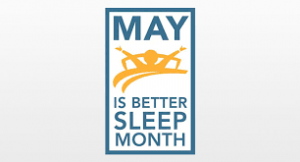Our nervous system consists of the Central Nervous System and Peripheral Nervous System. The Peripheral Nervous System is divided into the somatic, autonomic and enteric nervous systems. The Autonomic Nervous System is subdivided into the Sympathetic and Parasympathetic Nervous Systems. The Sympathetic Nervous System is related to fight-or-flight. When this fight-or-flight system is engaged, bodily functions like digestion slow down, but your blood pressure and heart rate increase. The Parasympathetic Nervous System is associated with relaxation, rest-and-digest, and gives the body a chance to recuperate from the Sympathetic Nervous System activities, and bodily functions like digestion speed up.
So what does the nervous system have to do with sleep?
In this electronic age, most of us have electronics, computers, tablets, games, televisions and phones in our bedroom. The brain can see the light and hear the vibration of the electronics while we sleep. This stimulation confuses the brain as to whether to be in the fight-or-flight mode (sympathetic nervous system) or rest-and-digest mode (parasympathetic nervous system) and is fighting between these two nervous systems. The body never has a chance to get into the relaxation mode, so our sleep is hindered.
Our bodies have a natural 24-hour pattern or Circadian rhythm. The hypothalamus regulates sleep, energy and hunger. The pineal gland releases melatonin which helps us sleep. When the body detects light, the light triggers melatonin levels to decrease, body temperature to increase and blood pressure to increase. When light decreases, melatonin increases, body temperature falls and blood pressure falls and sleep ensues. The Circadian rhythm is especially sensitive to the wavelength of the lights emitted by electronics and even energy-efficient bulbs. Exposure to these wavelengths while sleeping delays the release of melatonin. After exposure to these lights, the nervous system takes some time to relax.
Sleep is important to our health. When we move our muscles during the day, our muscles develop microtears. During deep sleep, the Human Growth Hormone is released to repair these microtears. If you are not reaching a deep sleep, this hormone is not released and the repairs are not made, resulting in muscle pain.
Suggestions for improving sleep:
– Establish a wind-down routine so your nervous system can successfully transition between the “drive” and “idling” modes.
– Have a comfortable mattress
– Have several sizes and shapes of Pillows
– An Epsom salt bath or soak can relax the muscles. Epsom salt is high in magnesium. Magnesium relaxes the muscles.
– Keep Your Five Senses Happy
SMELL – lavender relaxes, fresh clean sheets are inviting
TASTE –avoid fatty fried or spicy foods and caffeine before bed; choose foods that contain tryptophan like turkey, chicken, eggs, fish, nuts and dairy. CELERY contains pthalides/phthalides. These compounds cause the arteries to relax so blood pressure decreases.
TOUCH – room temperature, texture of sheets, comfortable mattress and pillows make sleep more pleasurable.
VISION – a darkened room invites sleep and helps the body go into a deep sleep; light stimulates the nervous system.
SOUND – some sounds can been stimulating and keep the nervous system in a fight-or-flight mode. Choose a white noise machine, fan, air purifier or even earplugs.
Massage helps your body transition from the Sympathetic Nervous System to the Parasympathetic Nervous System. If your body seems to be fighting off sleep, schedule your massage to help your body rest, relax, recuperate and rejuvenate.
Good night ! Sleep tight !







No Comments